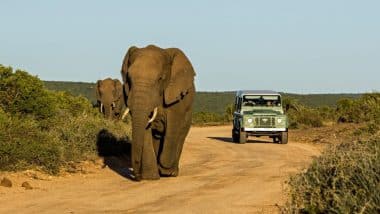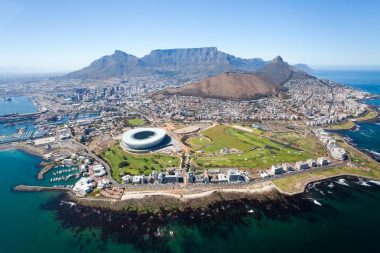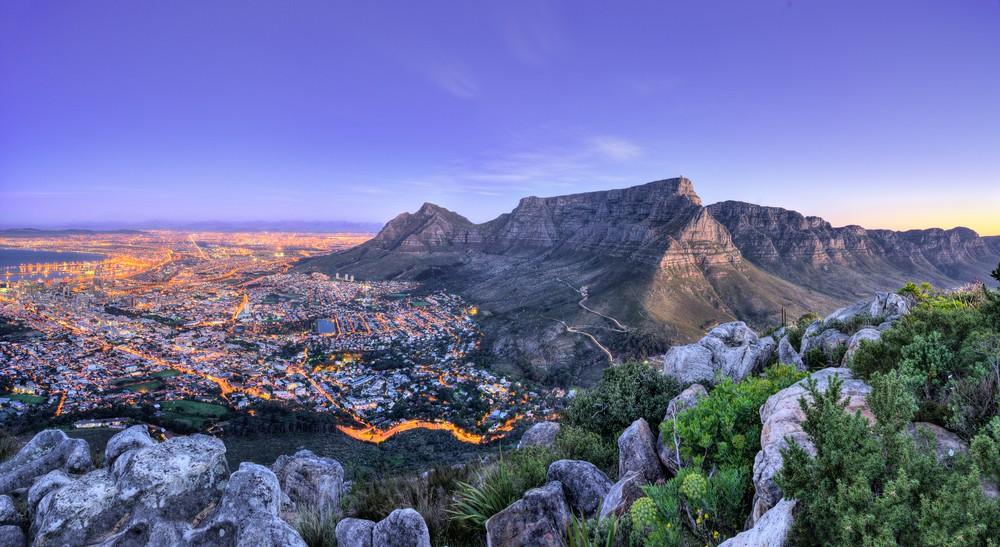Also known as the Rainbow Nation, South Africa at the southern tip of Africa is a country of cultural contrasts. Shaped by numerous cultures that have left their mark in the course of history, African, Dutch, British, French, German or Indian influences can still be discovered today, depending on the region.
South Africa’s unique flora and fauna, the different landscapes and especially its cultural diversity have made the country one of the most popular holiday destinations on the African continent. But South Africa, despite its beautiful dream beaches, is not a country for beach vacationers.

You don’t get to know the real treasures of South Africa by bathing in the sun on the beach. If you are interested in the beautiful nature and the fascinating culture of the country, a round trip to South Africa is recommended. Round trips are best done as guided group tours (overland tours) or as individual tours (self-drive). The first variant is more suitable for holidaymakers who do not like to organise themselves. The tour guide drives to the most beautiful sights and takes care of almost everything else. The second variant is suitable for holidaymakers who prefer to explore a country on their own and are not afraid of a bit of adventure.
What is the best time to travel to South Africa?
The seasons of South Africa are opposite to those of Germany. When it’s winter here, it’s summer in the southern hemisphere of the earth. The best time to travel to South Africa is from October to April.
However, depending on the region, the weather can change between sun and rain, with sometimes high temperatures of up to 40 degrees and high humidity. Most roads in South Africa are well developed, but self-drivers should avoid the actual rainy season from January to March, as some roads can still be difficult to drive on.
Since a round trip in South Africa can go through different climate zones with very different temperatures, in addition to light, permeable clothing, a sweater, a warm jacket and rain protection are not to be sneezed at. Sunscreen and a sun hat protect against the sometimes strong sunlight.
Recommended tours through South Africa
Johannesburg-Cape Town !

The tour is offered by various operators, but is also highly recommended for self-drivers. On the route you can drive to most of the country’s sights and see some great cities. For example, Durban, the city with the largest port in South Africa, offers a lot of sights.
For example, the impressive University Building, City Hall, Kings Park Stadium and the Bat-Centre at the harbour. In the restaurant there, hungry guests can enjoy dishes from all over Africa. At the beginning of the round trip in Johannesburg, the largest city in South Africa, there are also many sights and attractions.
Museum Africa shows a cross-section of the development of people in South Africa from early times to modern times. The Botanical Gardens with its large rose garden is also worth a visit. This beautiful rose garden consists of seven sloping terraces with about 10,000 roses. Other places of interest in Johannesburg are:
- Stock Exchange: Africa’s largest stock exchange
- Carlton Centre: tallest skyscraper in Africa
- Market Theatre Complex: several theatres, galleries, restaurants, bars and a jazz club
- African Herbalist Shop: Sale of African magic and natural remedies
For the tour Johannesburg – Cape Town you should plan at least 2 rather 3 weeks, because there is a lot to see, for example:
- Kruger National Park: largest wildlife sanctuary in Africa with lions, leopards, rhinos, elephants, buffaloes, gazelles, zebras, antelopes and many other animals.
- Blyde River Canyon: spectacular canyon made of red sandstone up to 800 meters deep.
- Drakensberg: up to 3482 meters high mountain range with sensational gorges, mountain ridges, caves, overhangs, waterfalls and mountain pinnacles.
- Addo Elephant National Park: large sanctuary for elephants, buffaloes and various antelope species.
- Wilderness: interesting coastal town with miles of sandy beaches, lagoons and its own national park.
- Tsitsikamma National Park: A special attraction is the 77-metre-long suspension bridge over the Storms River Mouth.
- Oudtshoorn: the place is known as an ostrich stronghold. In addition to the ostrich farms, the region offers other unique holiday experiences with one of the most beautiful mountain passes in South Africa, the “Swartberg Pass” and one of the most beautiful cave systems in the world, the “Cango Caves”.

The tour ends in Cape Town. The famous port city on Table Mountain got its name from the Cape of Good Hope, which is located about 45 kilometers away at the southern tip of Africa. The Indian and Atlantic Oceans meet at the Cape. A detour to the cape is an absolute must. The view of the stormy sea is breathtaking.
With a bit of luck, you may also encounter a herd of wild baboons at the Cape. Visitor magnets in Cape Town are the shopping centre in the harbour district “Victoria & Alfred Waterfront” and the “Two Oceans Aquarium”. Cape Town also has a lot to offer in terms of museums and historic buildings. The “Castle of Good Hope”, the Muslim district “Bo-Kaap” and the “Iziko Slave Lodge” (former slave accommodation) are just a few of them. Also worth a visit is the Museum of Natural History “Iziko South African”, with over 1.5 million exhibits and its own observatory.
Round trip South Africa – Garden Route !
This tour is particularly suitable for holidaymakers with little time, as it can be completed in about a week. The tour is best started in either Cape Town or Port Elisabeth. From the Campanile, a 53-metre-high observation tower, you have a beautiful panoramic view of “The Friendly City”, as Port Elisabeth is also called.
Holidaymakers who start their journey in Port Elisabeth should definitely visit the Oceanarium and Reptile House beforehand. Then the tour can start on one of the most beautiful stretches of coast in the world. The following highlights await them:
- Robberg Nature Reserve: Natural monument with prehistoric rocks and Stone Age artifacts.
- Garden Route National Park: large animal and plant protection reserve, comparable to the Kruger National Park.
- Swartvlei: largest salty inland lake in South Africa, with species-rich bird life.
- Goukamma Nature Reserve: unique fynbos vegetation and bizarre rock formations.
- Eastern Cape Game Reserves: small Xhosa villages (Bantu people), in the middle of countless green hills and imposing rivers.
- De Hoop Nature Reserve: an absolute insider tip: the heart of the park is snow-white, kilometre-long sand dunes.


